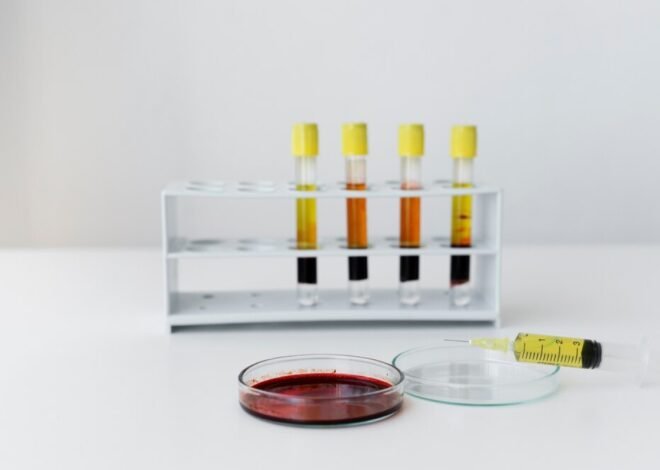
Milialar: Everything You Should Know About This Skin Condition
Milialar!
Our skin often serves as a reflection of our overall well-being and can sometimes be a source of both pleasure and confusion.
One common skin challenge that perplexes many is the appearance of military, often referred to as “milk spots” or “oil seeds.”
These tiny, typically white or yellowish bumps can be quite bothersome for those who encounter them.
In this comprehensive article, we will delve into the world of Milialar, exploring what they are, why they occur, and how to effectively deal with them.
What is Milialar?
Milialar are tiny, benign bumps or cysts that frequently appear on the skin’s surface.
They are typically small, rounded, and have a white or yellowish appearance.
Milia develop when dead skin cells become trapped beneath the skin’s surface, getting clung in tiny sweat ducts or crevices.
These cysts, resembling small gains of sand or pearls, are most commonly found on the face, especially around the eyes, cheeks, and nose, although they can also occur in other areas of the body.
While milia are usually painless and harmless, they can be a cosmetic concern for some people, leading to a need for treatment or preventive measures.
Significance of Understanding Milialar
1. Cosmetic Concerns: Milia can affect a person’s appearance, especially when they develop the most prominent features of the face.
Understanding milia enables individuals to identify and effectively manage these aesthetic issues.
2. Skin Health: Milia may occasionally be a sign of underlying skin sensitivity or problems.
Knowledge about their causes and risk factors can lead to a more knowledgeable approach to skincare along with improving overall skin health.
3. Prevention: People can take assertive steps in order to prevent milia by understanding the factors that contribute to their development, such as sun exposure and the use of specific skincare products.
Selecting appropriate skincare products and adopting healthy skincare habits are some of them.
4. Treatment Options: Understanding the various treatment options is essential for individuals who have milia and wish to address them.
Knowledge about exfoliation, topical retinoids, and dermatological extraction therapies can help people manage their milia effectively.
5. Dermatological Consultation: Being aware of milia encourages people to consult dermatologists when needed.
Dermatologists excel at diagnosing milia and discerning their specific type, along with offering personalized advice and treatments based on the patient’s skin type and condition.
6. Age Ranges: Milialar can affect people of all ages, including newborns (neonatal milia).
Understanding how milia manifests in different age groups allows for tailored prevention and treatment methods.
7. Overall Self-Confidence: Milialar can influence a person’s self-esteem and self-worth.
Understanding that milia are common, mostly harmless, and treatable can reduce anxiety and boost self-confidence.
8. Avoiding Myths: Knowledge about milia dispels common misconceptions about these cysts.
For instance, some individuals may mistake milia for warts or acne.
Accurate diagnosis and treatment can result from understanding these differences.
9. Sun Protection: Recognizing the link between sun exposure and the development of milia emphasizes the importance of sun protection, reducing the risk of milia and more severe skin conditions, such as skin cancer.
10. Personalized Skincare: Regimens tailored to individuals prone to milia can be highly beneficial.
Understanding milia allows people to customize their skincare routines and techniques to suit their needs, resulting in healthier, clearer skin.
Knowing Different Milia Species
Based on their underlying causes, milia can be categorized into several types:
1. Primary Milia: This is the most common type and can affect people of all ages.
Primary milia develops when dead skin cells block sweat ducts.
2. Secondary Milia: Skin damage or injury, such as burns or blisters, can lead to secondary milia.
They may also appear after certain skin procedures like dermabrasion or laser resurfacing.
3. Neonatal Milia: Common in newborns shortly after birth, These minuscule cysts pose no harm and usually clear up naturally within a few weeks.
4. Milia en Plaque: This rare form of milia appears as a cluster covering a raised, inflamed, area of skin.
Why Does Milia Occur?
Understanding the causes of milia is essential for prevention. Here are some common factors contributing to the development of Milialar:
1. Excessive Sun Exposure: Prolonged exposure to the sun can damage the skin and increase the likelihood of milia development.
2. Skincare Products: The use of dense or oily skincare products can lead to the blockage of pores and lead to milia.
Opt for non-comedogenic products that are less likely to obstruct pores.
3. Skin Trauma: Secondary milia can develop due to skin trauma or injury, such as burns or blisters.
4. Genetics: Some individuals may be genetically predisposed to developing these cysts.
5. Sweating and Humidity: Prolonged or excessive sweating, as well as high humidity levels, can lead to blocked sweat ducts, resulting in the development of milia.
Managing Milia: Available Therapies
While Milialar often resolves on their own, some individuals may find them persistent and bothersome.
Here are several effective medical treatments to consider:
1. Topical Retinoids: Creams containing over-the-counter or prescription retinoids can accelerate the exfoliation of dead skin cells, preventing milia development.
2. Exfoliation: Delicately scrubbing the skin with a gentle exfoliant or exfoliating cleanser can aid in the removal of dead skin cells, thereby lowering the likelihood of milia formation.
3. Dermatological Extraction: Trained dermatologists can safely puncture and eliminate milia by utilizing sterilized scalpels or specific types of needles.
This particular process should only be performed by experts to avoid scarring or infection.
4. Chemical Peels: Chemical peels aid in eliminating dead skin cells and milia by removing the top layer of the skin.
5. Microdermabrasion: This non-invasive procedure uses specialized equipment to exfoliate the skin’s top layer, helping to clear milia.
Preventing Milialar
To prevent the formation of milia and minimize the risk of recurrence, consider these proactive measures:
1. Go with Non-Comedogenic Products: Go for makeup and skincare products labeled as non-comedogenic, as they are less likely to clog pores.
2. Sunshield: Always apply sunscreen before going outdoors to protect your skin from harmful UV rays.
3. Gentle Cleansing: Opt for a mild, gentle cleanser when caring for your skin, and avoid abrasive scrubs that may irritate it.
4. Avoid Heavy Oils: Stay away from heavy or greasy oils and moisturizers, as they can cause pore blockage.
5. Routine Exfoliation: Include regular, gentle exfoliation in your skincare routine to prevent the buildup of dead skin cells.
What Are Vulvar Milial Cysts?
Vulval Milial cysts, those tiny 1-2 mm white cysts, are a frequent discovery when inspecting the labia of mature women.
While these delicate, small lumps might occasionally catch the patient’s attention, they typically remain quiet and unnoticed, serving as an unexpected surprise during examination.
May You Like Also: Stomach Sleepers’ Guide To Spinal Alignment and Back Health
Conclusion
Milia, though common, can affect a person’s perception of their appearance and self-worth.
To effectively manage and prevent these tiny cysts, it is crucial to understand the different types of milia, their causes, and the available treatments.
Remember that prevention is often the best approach.
To maintain radiant and milia-free skin, choose your skincare products wisely, protect your skin from the sun, and develop good skincare habits.
If you are struggling with recurring milia, seek expert advice from a dermatologist who can provide personalized treatment options tailored to your specific needs.
You May Like Also:













10 thoughts on “Milialar: Everything You Should Know About This Skin Condition”